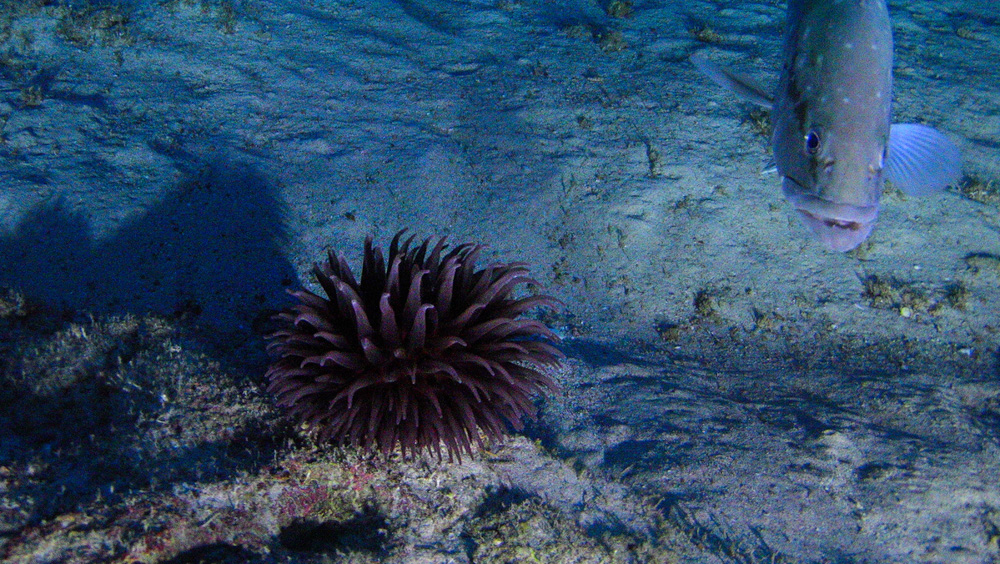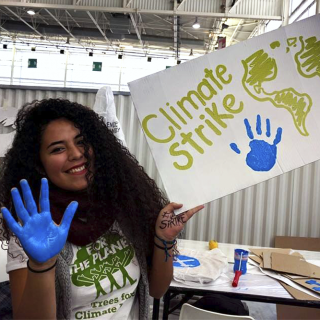Common people trying to stop big oil companies all over the world. Looking in the distance, it might even seem like a fight between David and Goliath. Looking closer, the saga proves that many Davis is a powerful force.
Since Greenpeace has started the Defend the Amazon Reef campaign in January 2017, more than 1,2 million people sign up a petition and have been spreading the message of the urge to protect this Brazilian natural treasure, that is barely know and it’s already threatened.
The Amazon Reef are constituted by corals, sponges and rhodolites. It occupies 9,500 square kilometers in the North of Brazil, where the Amazon river meets the Atlantic Ocean. The discovery was confirmed by the Science Advances journal in April 2016. And, in January, Greenpeace made an expedition to the area to get the first underwater images. It was an unexpected discovery for that region, and it was considered by experts as one of the most important of the last decades in marine ecology.
However, the British oil company BP and the French company Total have plans to drill for oil nearby the Amazon Reef. More than 1,2 million people who support the Greenpeace campaign are doing everything they can to avoid it.
In August, the campaign celebrated a victory: Brazil’s Environmental Agency (Ibama) rejected the application for a license to drill in the mouth of the Amazon Basin by Total.
Since 2015, the French company is trying to have its license to start drilling. Three other versions of the Environmental Impact Assessment (EIA) were submitted to Ibama, but the agency said that the document didn’t provide adequate information. During these years, Total had the chance to correct and submit new versions, but Ibama didn’t accept them. The company admits in their own study that there is a 30% probability of oil reaching the Reef in case of a spill.
Now, Total still has another chance to send additional documentation as requested by Ibama. However, the Amazon Reef defenders are not quitting to protect this ecosystem from Total’s and BP’s plans. And they will keep supporting Ibama’s decision to not grant the license.
Below, some examples of how people power is crucial for this campaign and what these people have done for a final victory.
In Copacabana beach, more than 600 people, many of them students from public schools, formed a giant human banner for the Defend the Amazon Reef campaign. The action was coordinated by the artist John Quigley with Greenpeace;
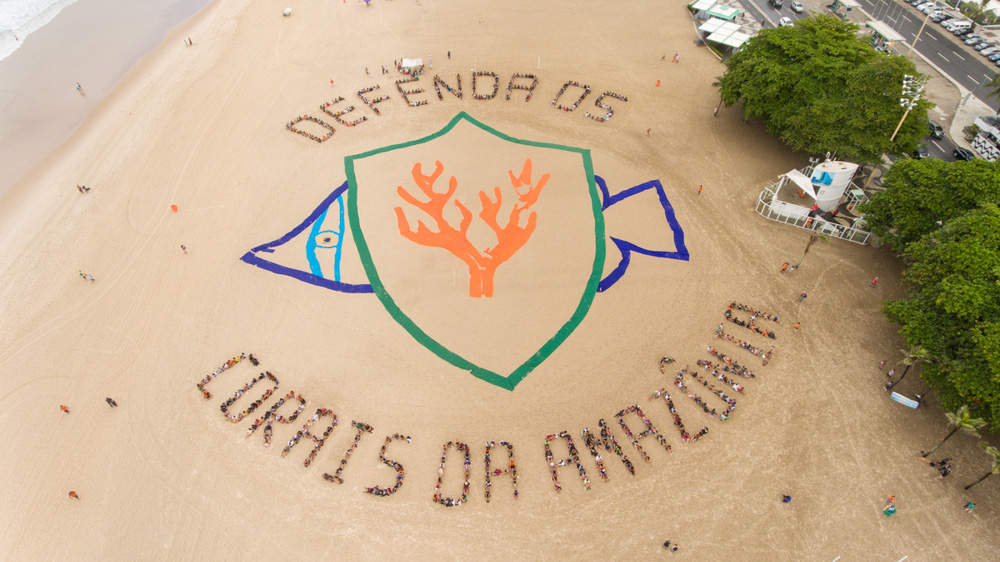
(Fernanda Ligabue/Spectral Q/Greenpeace)
In one single day, 450 activists from six countries went to streets to protest against Total’s plan to drill and to show support for the campaign. In Brazil, the activists covered themselves with a fake oil to simulate an oil spill. Showing what we don’t want to see in the Amazon Reef.
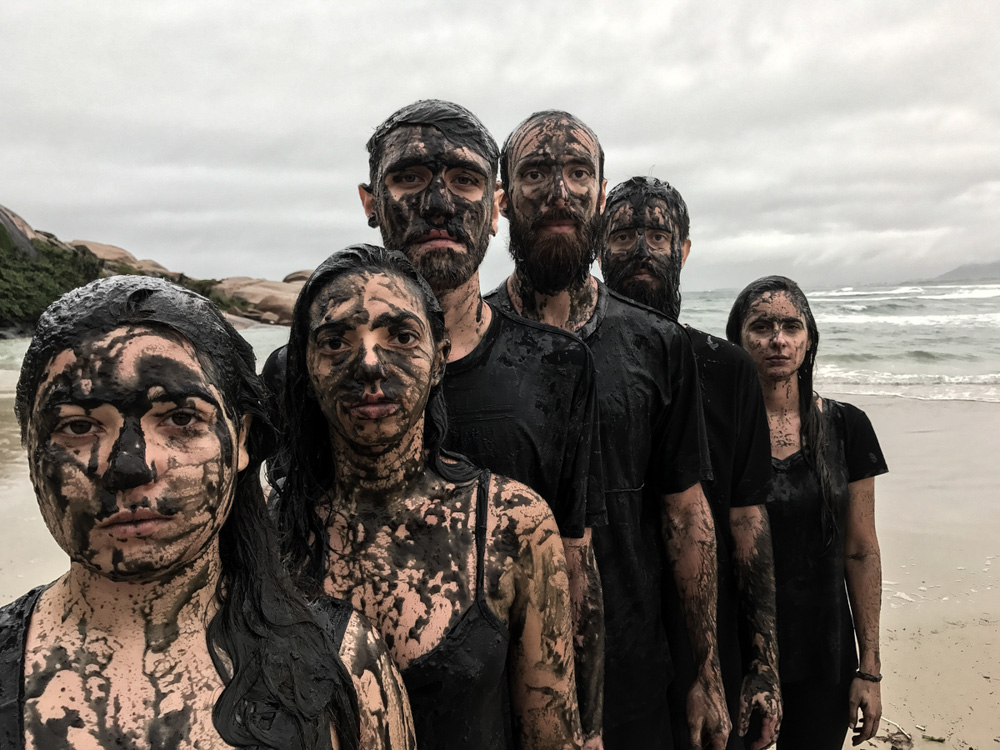
(Bruno Leão / Greenpeace)
In April 1t, at the Fool’s Day, the Brazilian activists went to touristic places to say to people they have found oil reserves there. “Do you think it’s insane to drill for oil here? It’s also insane to drill for oil near the Amazon Reef,” they said to many people who interacted with the action.

(Greenpeace)
During a protest in Belgium, activists went to a Total refinery in the port of Antwerp. More than 40 activists climb towers and chimneys to show the beautiful ecosystem that Total want to treat with a possibility of an oil spill in North of Brazil.
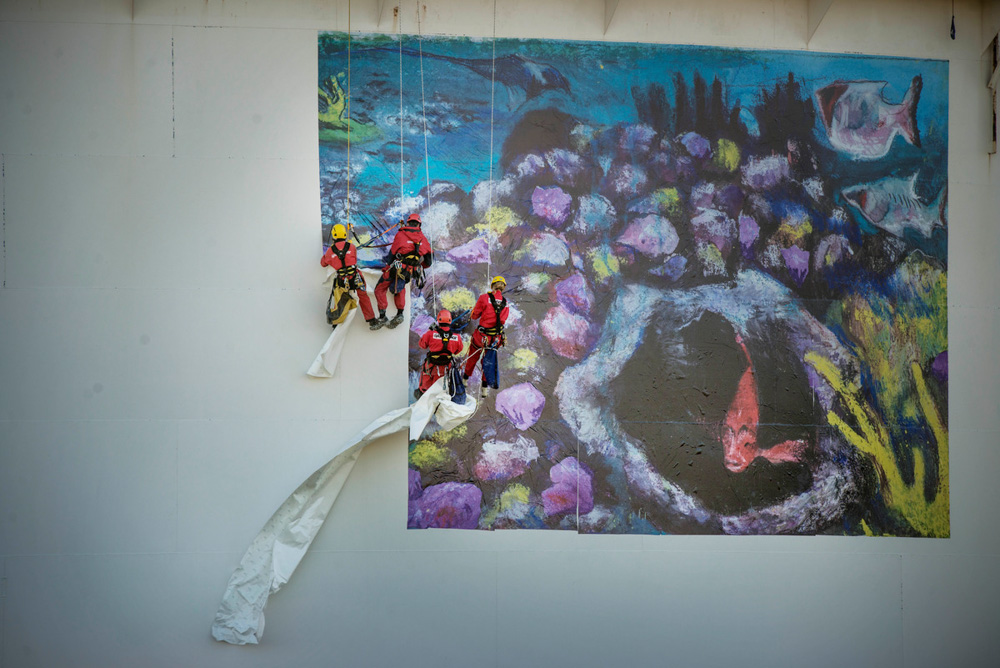
(Eric De Mildt / Greenpeace)
On August, the campaign supporters brought a parade of giant tropical sea creatures to BP’s head office in London, to protest their plans to drill for oil near the Amazon Reef. They delivered a petition with over a million signatures asking BP not to drill near the reef, along with a map to show the company where the reef is.

(Chris Ratcliffe / Greenpeace)
The Scientific community also supported the campaign. Many scientists sign an open letter highlighting the importance of this unique environment, and warning of the threat from an oil spill nearby. They said more studies about the reef are needed instead of investing in oil drilling there. Some names that signed up are: Pavan Sukhdev, economist and study leader of TEEB, lead author of Towards a Green Economy, and author of Corporation 2020; Sylvia Earle, oceanographer, founder and president of Mission Blue; Paulo Artaxo, climatologist, geochemist and meteorologist from USP, Brazil and Paulo Nobre, senior researcher in weather & climate, from INPE, Brazil.
Published on 09/15/2017
